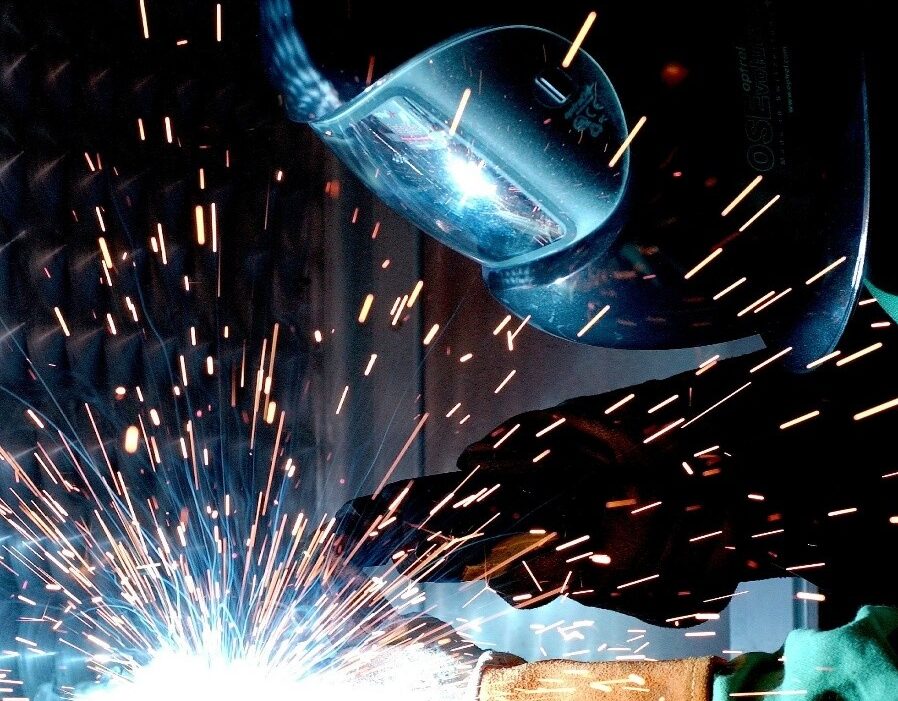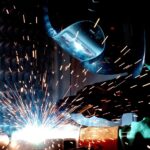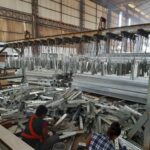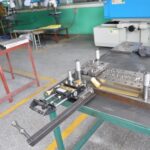Mastering Modern Welding Techniques
Getting an Insight about TIG, MIG, and Stick (SMAW) Welding’s
Understanding TIG welding

TIG welding, or more commonly known as GTAW (Gas Tungsten Arc Welding), is an efficient welding process that is favorable for accurate work, especially in stainless steel fabrication. This method creates the weld using a non-consumable tungsten electrode thus making it ideal for thin sections in stainless fabrication and aluminum weld joints. It enables independent control of heat input into the weld zone, limiting distortion which is crucial in precision sheet metal fabrication.
Another important feature of TIG welding is the preservation of the welded area by a continuous flow of an inert gas, used in this case, argon. This results into the production of thin, stable, spatter free welds that are well formed, giving the correct weld bead profile. TIG welds can be highly convenient since it provides the user with full control over the current magnitude, voltage as well as the length of the arc. This precision makes TIG welding most applicable in industries, which require high standard and clean weld, for instance aerospace and automotive industries, where stainless steel fabrication is involved. However, mastering the technique can be tricky, requiring refined hand operation most of the time, though a foot pedal can be used to control heat input at certain points.
It is imperative to adopt TIG welding when undertaking stainless fabrication work as this can help in improving the quality of the welds made. There is a significant advantage of the method, which is its ability to effectively control the welding parameters thus meeting the fine details that are standard in this industry. Thus, fostering the right knowledge of TIG welding can significantly help in achieving a desirable quality weld in your stainless steel fabrication work.
The Basics of MIG Welding
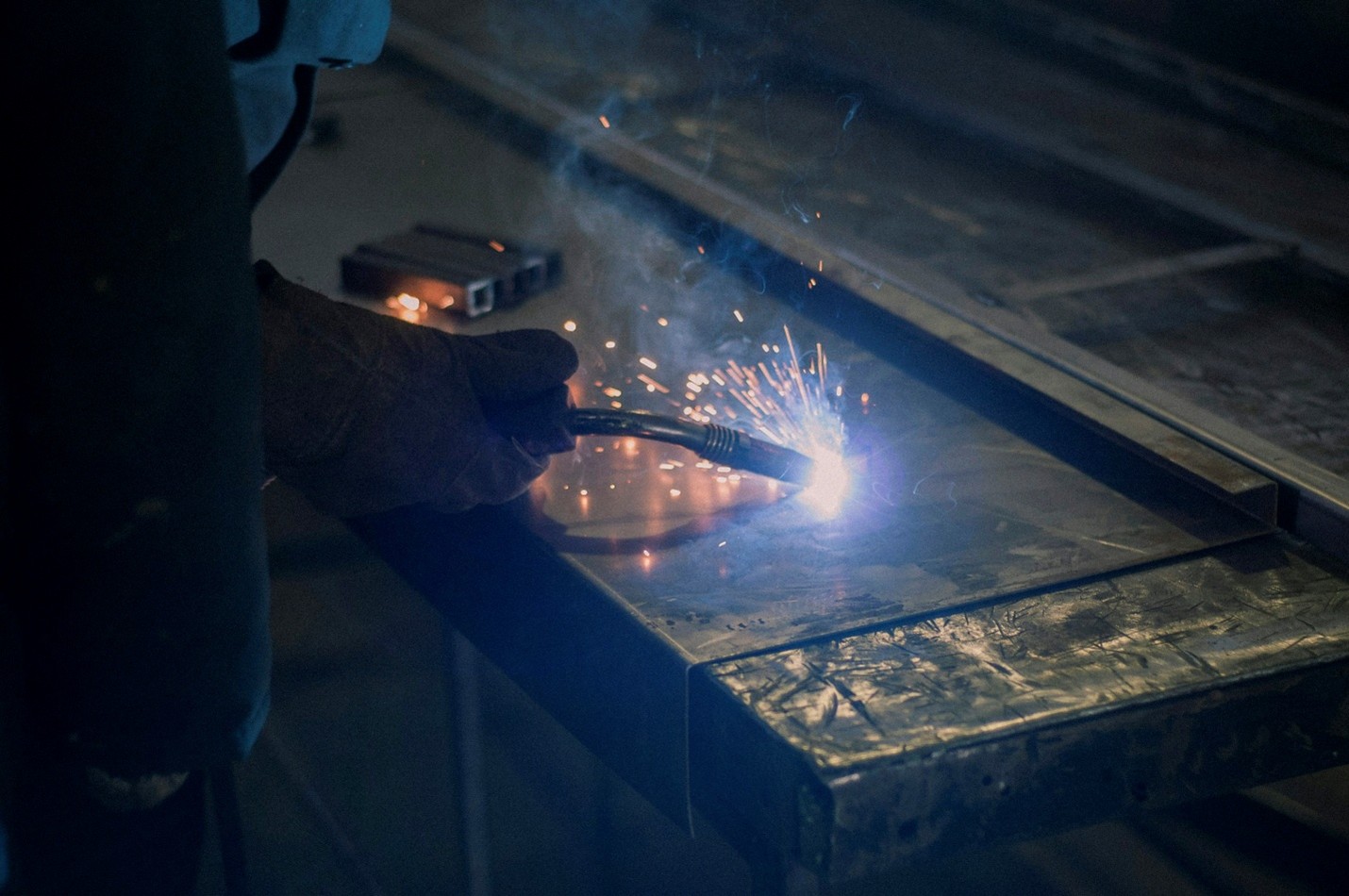
MIG welding, or gas metal arc welding (GMAW), is a semi-automatic or automatic welding process that offers ease of use and high productivity. This method is rigorously used in metal fabrication, employing a continuously fed consumable wire electrode and a shielding gas, typically a mixture of argon and CO2, to protect the weld pool from atmospheric contamination. Gas metal arc welding (GMAW) is highly effective for welding thicker materials and is commonly used in industries such as automotive, construction, and shipbuilding. Structural steel fabricators and industrial fabricators also rely heavily on this process for its efficiency and versatility.
The process involves establishing an electric arc between the wire electrode and the workpiece, which melts both the electrode and the base material, forming a weld pool. One of the major advantages of MIG welding in steel fab is its high deposition rate, which allows for faster welding speeds and increased efficiency. Additionally, MIG welding can be performed in various positions—flat, horizontal, vertical, and overhead—making it a versatile choice for different welding fabrication applications. However, achieving high-quality welds requires proper adjustment of parameters such as wire feed speed, voltage, and travel speed. This adaptability and efficiency make MIG welding a go-to method for structural steel fabricators and industrial fabricators alike, ensuring robust and reliable welds across various projects.
Shielded Metal Arc Welding ( SMAW): The Timeless Method
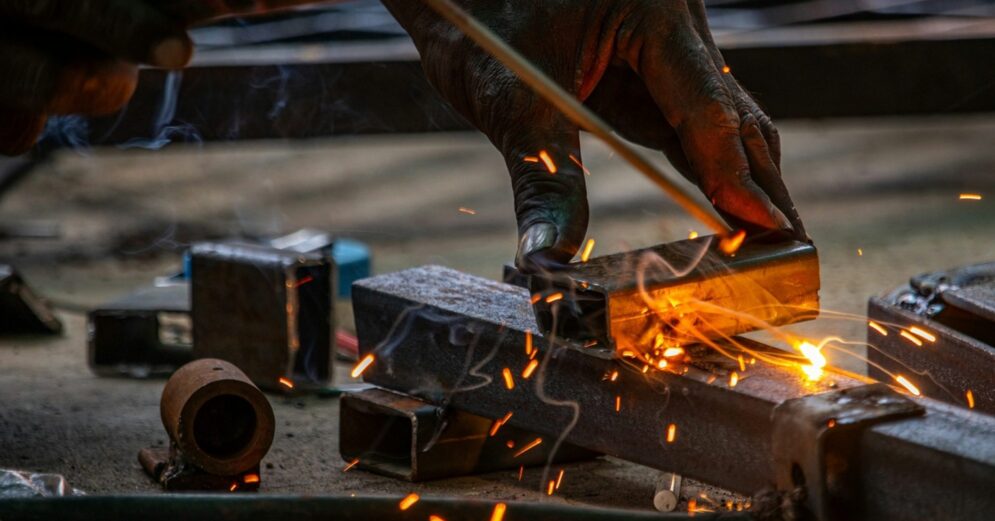
Stick welding, formally known as Shielded Metal Arc Welding (SMAW), is a manual arc welding process in the steel fab industry that uses a consumable electrode coated in flux. When an electric arc is struck between the electrode and the workpiece, the intense heat melts both the electrode and the base material. The flux coating disintegrates, producing shielding gases and slag, which protect the weld pool from oxidation and contamination.
Stick welding is highly versatile and can be used on a wide range of metals, including steel, stainless steel, and cast iron. This method is particularly well-suited for outdoor and field welding and fabrication applications due to its tolerance for windy conditions and dirty or rusty surfaces. The simplicity and robustness of the equipment—typically consisting of a power source, electrode holder, and ground clamp—make stick welding a preferred method for heavy-duty industrial applications, pipeline work, and maintenance and repair tasks. Metal fabricators appreciate its reliability, especially in challenging environments.
In the realm of metal fabrication, SMAW is a go-to technique for many steel fabrication projects. The process is integral to welding services that require strong, durable welds. Custom fabrication shops also favor SMAW welding for its ability to handle a variety of metals and conditions, ensuring high-quality results. However, it generates more spatter and requires post-weld cleaning to remove slag, which can be time-consuming but ultimately worth it for the integrity and strength of the weld.
Choosing the Right Welding Method for Metal Fabrication
When it comes to metal fabrication, choosing the right welding method significantly impacts the quality and efficiency of your work. MIG welding, or Gas Metal Arc Welding (GMAW), is excellent for projects requiring speed and versatility, especially in automotive and construction environments where high productivity is crucial. Its ability to produce strong welds on thicker materials makes it indispensable in steel fabrication.
On the other hand, stick welding offers unparalleled flexibility for on-site repairs and outdoor applications. Its robustness and simplicity make it ideal for welding fabrication tasks in challenging environments, such as pipeline maintenance and heavy equipment repairs. Metal fabricators often rely on stick welding for its reliability in diverse conditions.
TIG welding, also known as Gas Tungsten Arc Welding (GTAW is known for its precision and control, making it ideal for detailed and high-quality welds, particularly in sheet metal fabrication projects involving thin materials like stainless steel and aluminum. This method produces clean, aesthetically pleasing welds with minimal spatter, which is highly valued in industries such as aerospace and automotive.
However, TIG welding requires a high level of skill and experience, as the process demands careful coordination of the torch, filler rod, and foot pedal to control heat input. This can make TIG welding slower and less suited for high-production environments compared to Gas Metal Arc Welding. Additionally, TIG equipment is more expensive and less portable than SMAW apparatus, limiting its use in certain field applications.
Understanding the strengths and weaknesses of MIG, SMAW, and TIG welding ensures you can select the best approach for your specific metal fabrication needs.
In a sheet metal shop, the choice between MIG and TIG welding can greatly affect the quality of the finished product. Structural steel fabricators might prefer Gas Metal Arc Welding for its efficiency in handling large projects, while a sheet metal shop might benefit more from the precision of TIG welding.

Key Takeaways:
- MIG Welding (Gas Metal Arc Welding – GMAW):
- Ideal for projects requiring speed and versatility in metal fabrication.
- Crucial in automotive and construction environments for high productivity.
- Produces strong welds on thicker materials, essential in steel fabrication and welding fabrication.
- Stick Welding:
- Offers flexibility for on-site repairs and outdoor applications in metal fabrication.
- Robust and simple, perfect for challenging environments such as pipeline maintenance and heavy equipment repairs.
- Reliable for metal fabricators in diverse conditions, making it a staple in welding fabrication tasks.
- TIG Welding (Gas Tungsten Arc Welding – GTAW):
- Known for precision and control, ideal for detailed and high-quality welds.
- Best for sheet metal fabrication involving thin materials like stainless steel and aluminum.
- Produces clean, aesthetically pleasing welds with minimal spatter, valued in aerospace and automotive industries.
- Requires high skill and experience; coordination of torch, filler rod, and foot pedal to control heat input.
- Slower and less suited for high-production environments compared to gas metal arc welding.
- More expensive and less portable equipment, limiting field applications.
Selecting the Best Approach for Metal Fabrication:
- MIG Welding:
- Preferred in a sheet metal shop for its efficiency and handling large projects, crucial for structural steel fabricators.
- Stick Welding:
- Favored for its reliability in diverse conditions and heavy-duty tasks in welding fabrication.
- TIG Welding:
- Chosen for precision in custom sheet metal work and detailed stainless steel fabrication projects.
